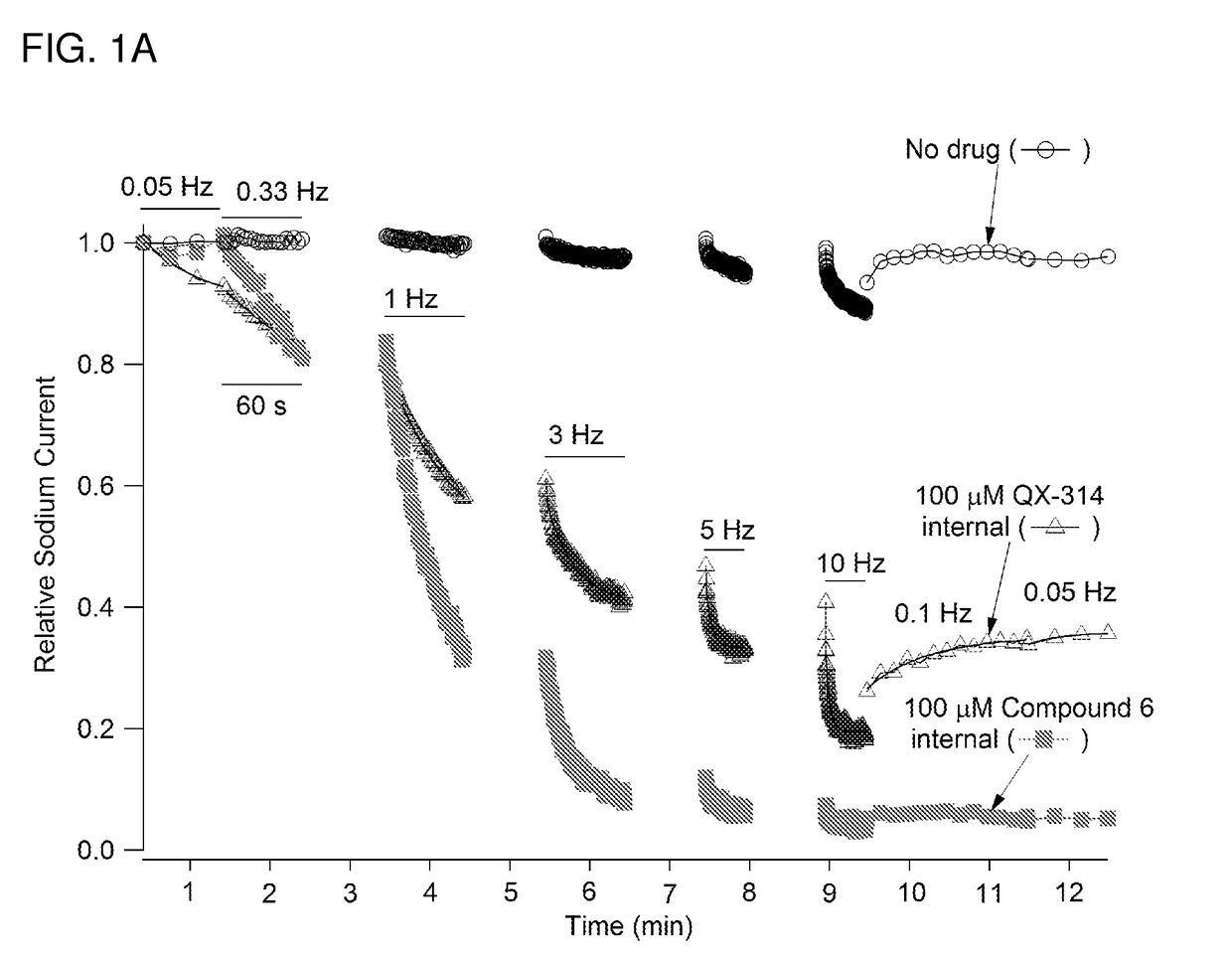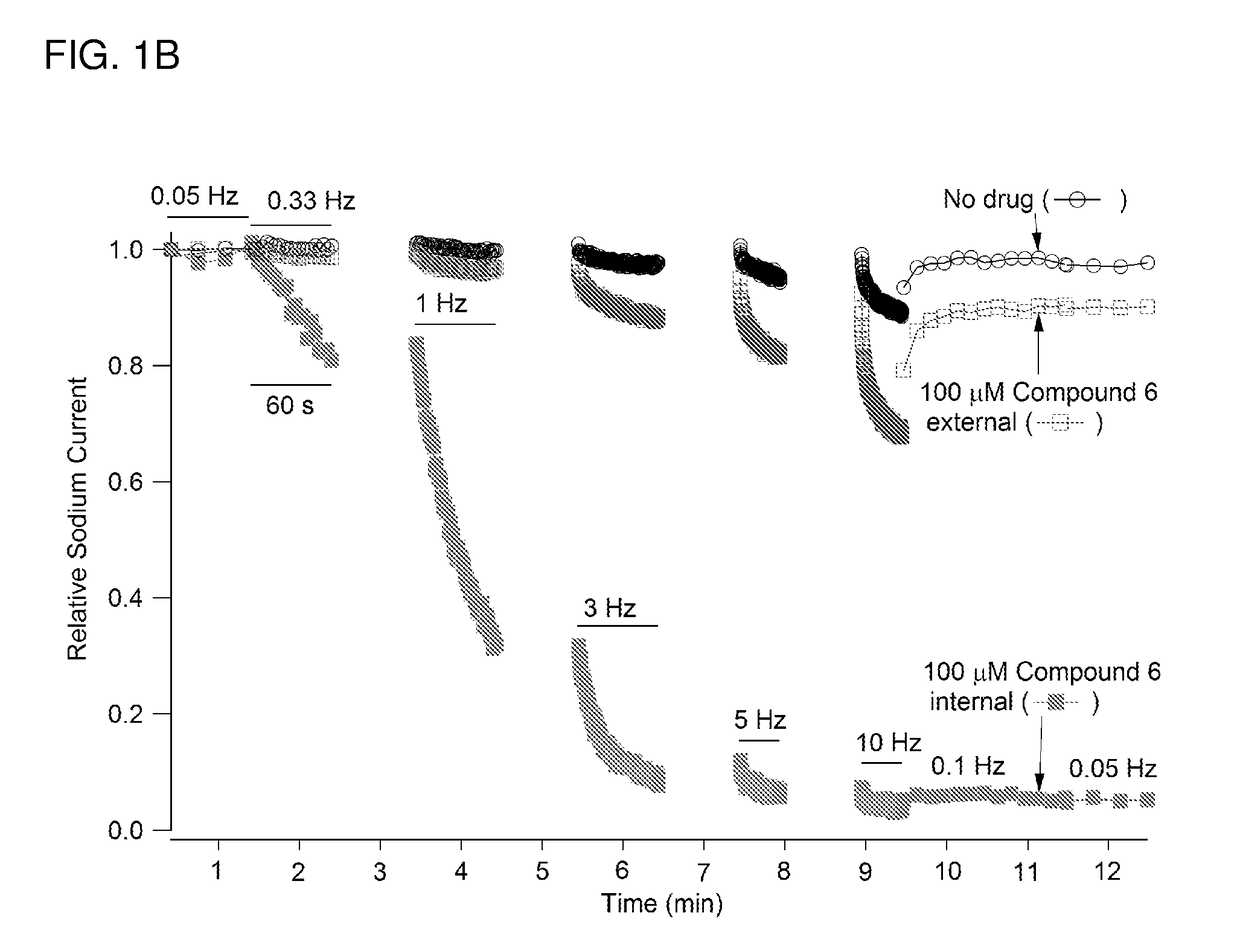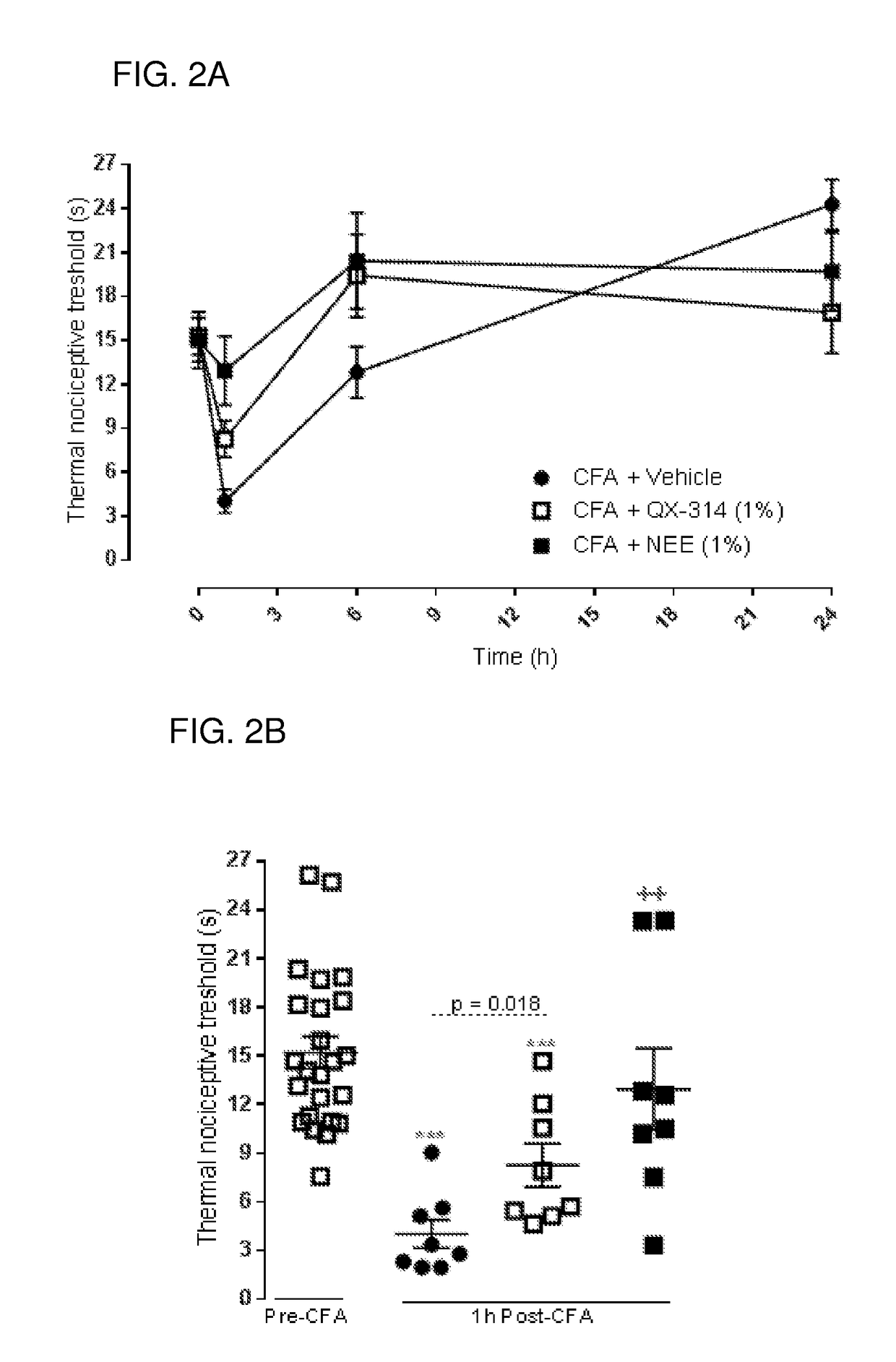Charged ion channel blockers and methods for use
a technology of ion channel blockers and ion channels, applied in the direction of heterocyclic compound active ingredients, drug compositions, cardiovascular disorders, etc., can solve the problem that the administration of local anesthetics also produces unwanted or deleterious effects
- Summary
- Abstract
- Description
- Claims
- Application Information
AI Technical Summary
Benefits of technology
Problems solved by technology
Method used
Image
Examples
example 1
of 1-(1-(2,6-dimethylphenylamino)-1-oxopropan-2-yl)-1-methylpyrrolidinium chloride (Compound 1)
[0174]
Step 1: Preparation of 2
[0175]
[0176]The solution of 1 (5.0 g, 32.86 mmol, 1.0 eq) in 30 mL SOCl2 was refluxed at 8° C. for 2 h. After competition, the reaction mixture was directly concentrated in vacuum to give a residue without further purification (7.8 g, y=120%).
Step 2: Preparation of 3
[0177]
[0178]To a solution of 2,6-dimethylaniline (4.6 g, 38.2 mmol, 1.0 eq) in DCM (10 mL) and TEA (4.6 g, 45.8 mmol, 1.2 eq) was added 2 (7.8 g, 45.8 mmol, 1.2 eq) in DCM (20 mL) slowly at ice bath. Then the reaction mixture was warmed to R.T. for 2 h. After competition, the reaction mixture was adjusted to pH=5-6 with 2N HCl, extracted with EA (150 mL×2). The combined organic phases was washed with brine (100 mL), dried over Na2SO4, filtered and concentrated in vacuum to give a residue. The residue was purified by column chromatography to give the desired product (4.8 g, 50% yield) as gray solid....
example 2
of 1-(1-(2,6-dimethylphenylamino)-2-methyl-1-oxopropan-2-yl)-1-methylpyrrolidinium chloride (Compound 2)
[0185]
Step 1: Preparation of 2
[0186]
[0187]The solution of 1 (10.0 g, 59.88 mmol, 1.0 eq) in 60 mL SOCl2 was refluxed at 80° C. for 2 h. After competition, the reaction mixture was directly concentrated in vacuum to give a residue without further purification (15.0 g, y=132%).
Step 2: Preparation of 3
[0188]
[0189]To a solution of 2,6-dimethylaniline (8.16 g, 67.38 mmol, 1.0 eq) in DCM (50 mL) and TEA (8.18 g, 80.86 mmol, 1.2 eq) was added 2 (15.0 g, 80.86 mmol, 1.2 eq) in DCM (50 mL) slowly at ice bath. Then the reaction mixture was warmed to R.T. for 2 h. After competition, the reaction mixture was adjusted to pH=5-6 with 2N HCl, extracted with EA (200 mL×2). The combined organic phases was washed with brine (150 mL), dried over Na2SO4, filtered and concentrated in vacuum to give a residue. The residue was purified by column chromatography to give the desired product (14.8 g, 82% yi...
example 3
of 1-(1-(2,6-dimethylphenylamino)-1-oxobutan-2-yl)-1-ethylpyrrolidinium chloride (Compound 3)
[0196]
Step 1: Preparation of 2
[0197]
[0198]The solution of 1 (10.0 g, 60.2 mmol, 1.0 eq) in 60 mL SOCl2 was refluxed at 80° C. for 2 h. After competition, the reaction mixture was directly concentrated in vacuum to give a residue without further purification (15.0 g, y=132%).
Step 2: Preparation of 3
[0199]
[0200]To a solution of 2,6-dimethylaniline (8.2 g, 67.97 mmol, 1.0 eq) in DCM (200 mL) and TEA (8.25 g, 81.56 mmol, 1.2 eq) was added 2 (15.0 g, 80.86 mmol, 1.2 eq) in DCM (50 mL) slowly at ice bath. Then the reaction mixture was warmed to R.T. for 2 h. After competition, the reaction mixture was adjusted pH 5-6 with 2N HCl, extracted with EA (200 mL×2). The combined organic phases was washed with brine (150 mL), dried over Na2SO4, filtered and concentrated in vacuum to give a residue. The residue was purified by column chromatography to give the desired product (3.0 g, 17% yield) as solid.
St...
PUM
| Property | Measurement | Unit |
|---|---|---|
| molecular weight | aaaaa | aaaaa |
| time | aaaaa | aaaaa |
| time | aaaaa | aaaaa |
Abstract
Description
Claims
Application Information
 Login to View More
Login to View More - R&D
- Intellectual Property
- Life Sciences
- Materials
- Tech Scout
- Unparalleled Data Quality
- Higher Quality Content
- 60% Fewer Hallucinations
Browse by: Latest US Patents, China's latest patents, Technical Efficacy Thesaurus, Application Domain, Technology Topic, Popular Technical Reports.
© 2025 PatSnap. All rights reserved.Legal|Privacy policy|Modern Slavery Act Transparency Statement|Sitemap|About US| Contact US: help@patsnap.com



